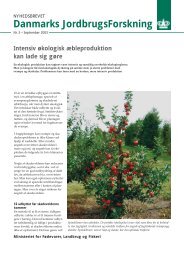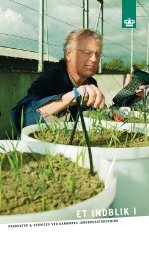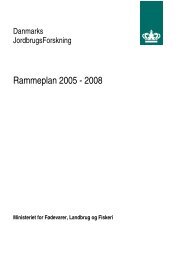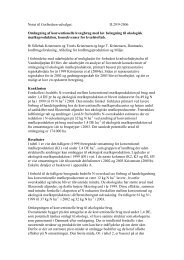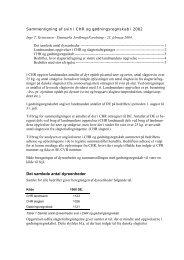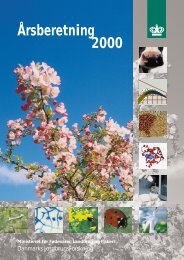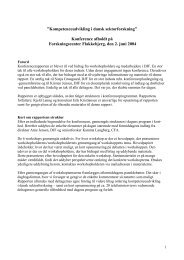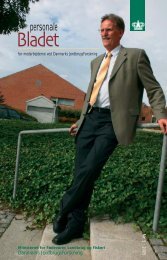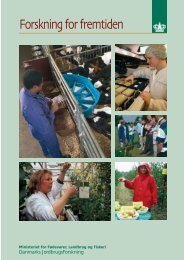Reproduction performances and conditions of group-housed non ...
Reproduction performances and conditions of group-housed non ...
Reproduction performances and conditions of group-housed non ...
You also want an ePaper? Increase the reach of your titles
YUMPU automatically turns print PDFs into web optimized ePapers that Google loves.
- Appendix 1 -<br />
they are mature i.e. capable <strong>of</strong> fertilisation (see above). The fertilisation ability <strong>of</strong> the sperm<br />
in the female tract begins to decline after 12 hours (Dziuk, 1970) but can survive for more<br />
than 44 h (Kemp & Soede, 1997). Therefore a successful insemination or mating also de-<br />
pends upon clear oestrus behaviour <strong>of</strong> the sow <strong>and</strong> a co-ordination between oestrus behav-<br />
iour <strong>and</strong> ovulation, which as will be discussed later, depends on a good hormonal function.<br />
Physiological events after mating/insemination<br />
To gain pregnancy <strong>and</strong> a high litter size, the embryo survival also has to be high. A high<br />
embryo survival depends upon whether the following events are successful.<br />
Fertilised eggs are moving from the ampullary-isthmic junction (where fertilisation occurs)<br />
to the uterus. During this journey, which takes about 48 h, the eggs under go cleavage (cell<br />
division) <strong>and</strong> when they reach the uterus, they are at the four-cell stage (Dziuk, 1985;<br />
Ashworth, 1991). In the uterus the cell divisions continue (Hughes et al., 1996). On day six<br />
to day seven hatching from the zona pellucida (which is a complex glycoprotein matrix<br />
formed around each oocyte during follicular development (Dunbar & Bundman, 2003) occurs<br />
(Strob<strong>and</strong> & Lende, 1990). After hatching, the eggs become increasingly dependent<br />
upon nutrients in uterine secretions (Ashworth, 1991). Between day 7 <strong>and</strong> 12 <strong>of</strong> pregnancy<br />
the fertilised eggs redistribute themselves over the full length <strong>of</strong> both uterus horns (Dziuk,<br />
1985). Finally the elongation <strong>and</strong> the implantation (attachment to the uterine endometrium)<br />
take place. Elongation starts around day 10 <strong>of</strong> gestation (Ashworth, 1991; Geisert & Yelich,<br />
1997). During elongation the embryos undergo a morphological change from 10 mm<br />
spherical (i.e. round) to tubular (20-40 mm) <strong>and</strong> finally filamentous (up to 100 cm in<br />
length!) shapes by day 14-16 (Ashworth, 1991; van der Lende et al., 1994; Geisert & Yelich,<br />
1997). The implantation starts around day 13-14 <strong>of</strong> pregnancy <strong>and</strong> is completed about<br />
24 days after fertilisation (Crombie, 1970; Ashworth, 1991). Each embryo is surrounded by<br />
separate fluid filled membranes, the amnion <strong>and</strong> chorion, which form the placenta<br />
(Ashworth, 1991). From day 18 to day 30 <strong>of</strong> pregnancy the volume <strong>of</strong> this fluid increases<br />
markedly (Ashworth, 1991) <strong>and</strong> it is the presence or absence <strong>of</strong> this fluid that can be detected<br />
by the commonly used ultrasound pregnancy diagnosis instruments. On day 35 <strong>of</strong><br />
pregnancy the embryo is approximately four cm long (van der Lende, 1989) (see Figure 2).<br />
113




